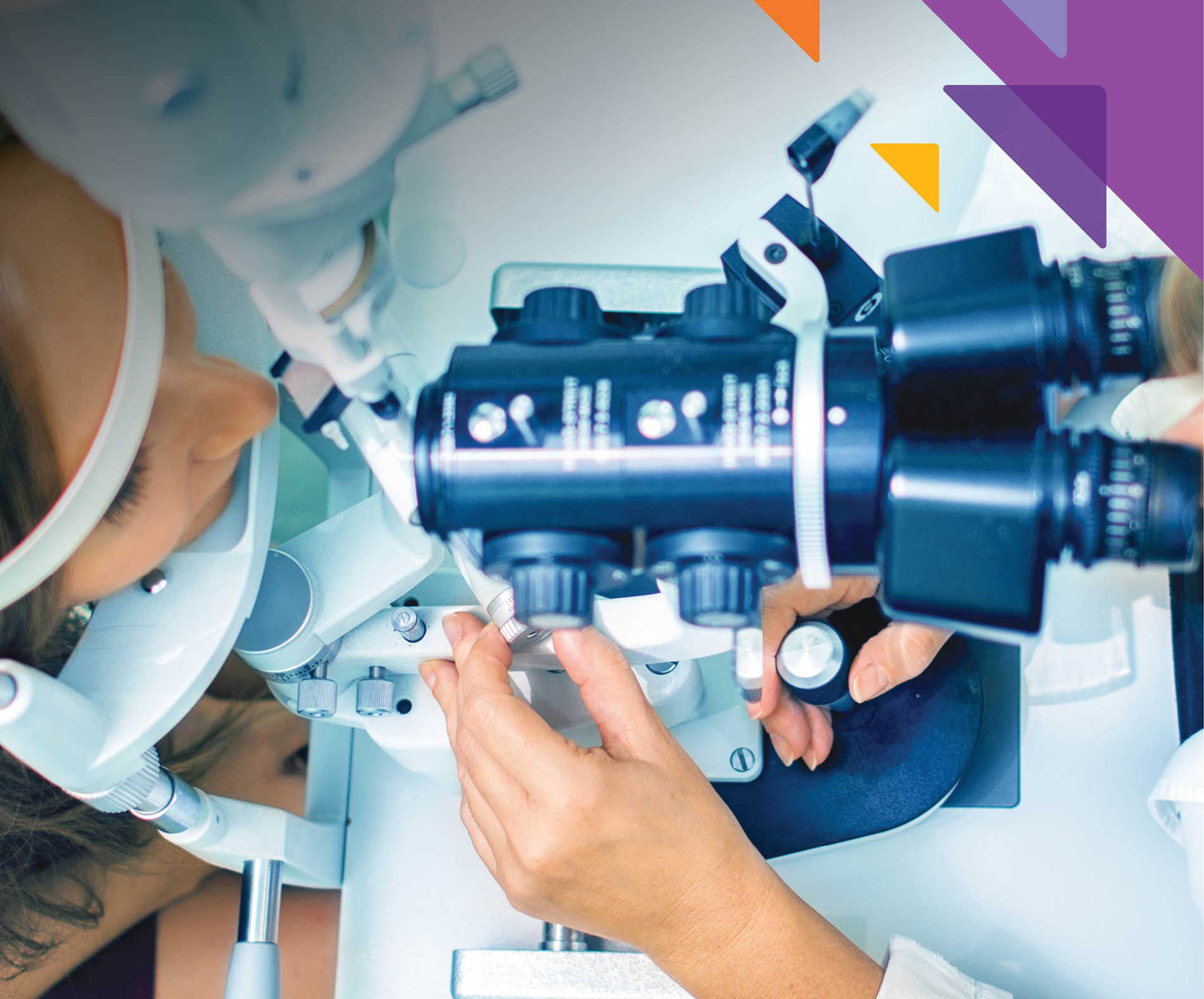Accessibility is a term that knows no bounds, defining the ease of use of technologies, services, and environments. At one time associated mainly with disability, its prominence now is largely driven by universal design and the aging population. Smart developers know that for a product to be successful it must be easily adoptable by people of every age. No dumbing-down required.
The new age of accessibility is a game changer for people with vision loss in particular. We are no longer relegated to the stigma, or the expense, that “special” technology has traditionally carried. Using the same popular devices everyone else is using has incredibly healing and renewing properties, and gives us back some sense of normal. It is ultimately about inclusion.
The most disappointing thing about these amazing developments is that far too many people are unaware that accessibility exists, and they continue to needlessly struggle with daily tasks! We can all help to change that. Screen settings and speech applications can significantly benefit all patients experiencing any and every degree of vision loss. They just need to know it’s available.
In 2008, Apple delivered the iPhone with Accessibility Settings built into every phone, at no extra cost, which expanded usability to people with low vision or no vision. The move marked a pivotal shift in mainstream accessibility and Apple became the undisputed leader in this important evolution.
The iPhone became the most adopted device, ever, among people with vision loss. It is also the most multiple-use device ever available for vision. Today the iOS options under Accessibility Settings for Vision include VoiceOver, Zoom, Magnifier, Larger Text, Bold Text, and Increased Contrast. These settings, along with Siri’s AI (artificial intelligence) and Dictation features, are not just beneficial for people with serious visual impairments…they’re good for everyone!
In 2010, the 21st Century Communications and Video Accessibility Act (CVAA) was signed into law, mandating equal access to digital, broadband, and mobile devices for people with visual impairments or blindness. This is why all smartphones and tablets now have accessibility features included. It is also why all cable providers now offer customers the option to enable talking TV guides and menus. We now have an abundance of choices. Although all are not created totally equal, we can expect Android phones and tablets are accessible. Amazon’s Kindle eReaders and Fire tablets are accessible. Google, Microsoft, and Apple all make universal access a standard.
Accessibility apps also play a meaningful role in improving function for people with visual impairments. There are apps that are magnifiers and flashlights; apps that take notes and send reminders; apps that convert text to speech; apps that help you take a well-focused photograph; and apps that read signs and locate transportation.
This range of useful options isn’t limited to just cell phones and tablets — Microsoft Windows PC and Apple’s Mac computers can also be depended on for magnification, speech, dictation, and voice commands. People often give up computer use once the screen becomes too difficult to read. They don’t realize that they can adjust the technology to their needs, every step of the way. This is particularly important for people at work. The great majority of low vision users can continue to work, uninterrupted, with a little help from their IT Department to set it up to suit their particular needs.
Taking an even bigger leap forward, Apple launched a dedicated Accessibility Support phone line to assist their customers with visual, hearing, motor, and learning impairments. The Verizon Wireless Accessibility Center followed. Next came the Microsoft Disability Answer Desk. Comcast, the leader in cable accessibility, offers dedicated phone support. Recently, Google announced that they, too, are preparing to launch a special support line. Amazon does not yet offer dedicated support, but they do have staff well versed in accessibility for Kindle, Fire and Echo accessibility.
It is a life-changing innovation, and this is just the beginning — the best is clearly yet to come. Intuitive and predictive technology, interacted with by voice, is the next big frontier. Smart speakers like Amazon Echo and Google Home are already popular and accessible for people of all ages and acuities. A powerful reminder that we are more alike than we are different.
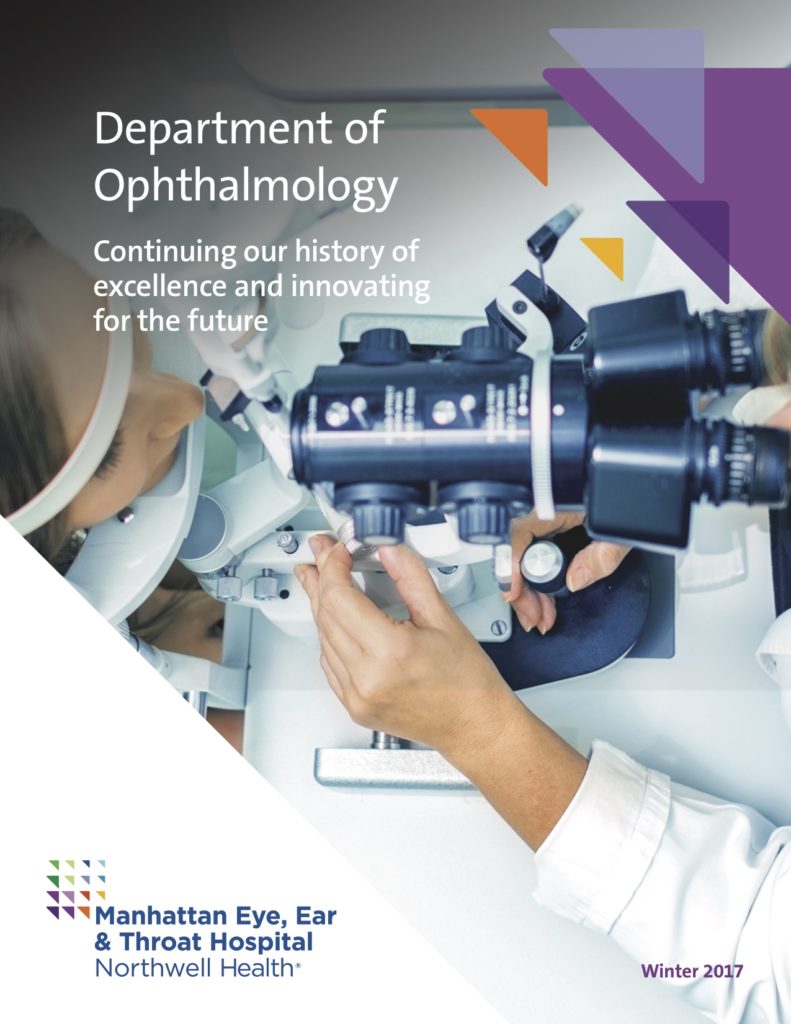
Image Credit: Manhattan Eye, Ear & Throat Hospital | Northwell Health
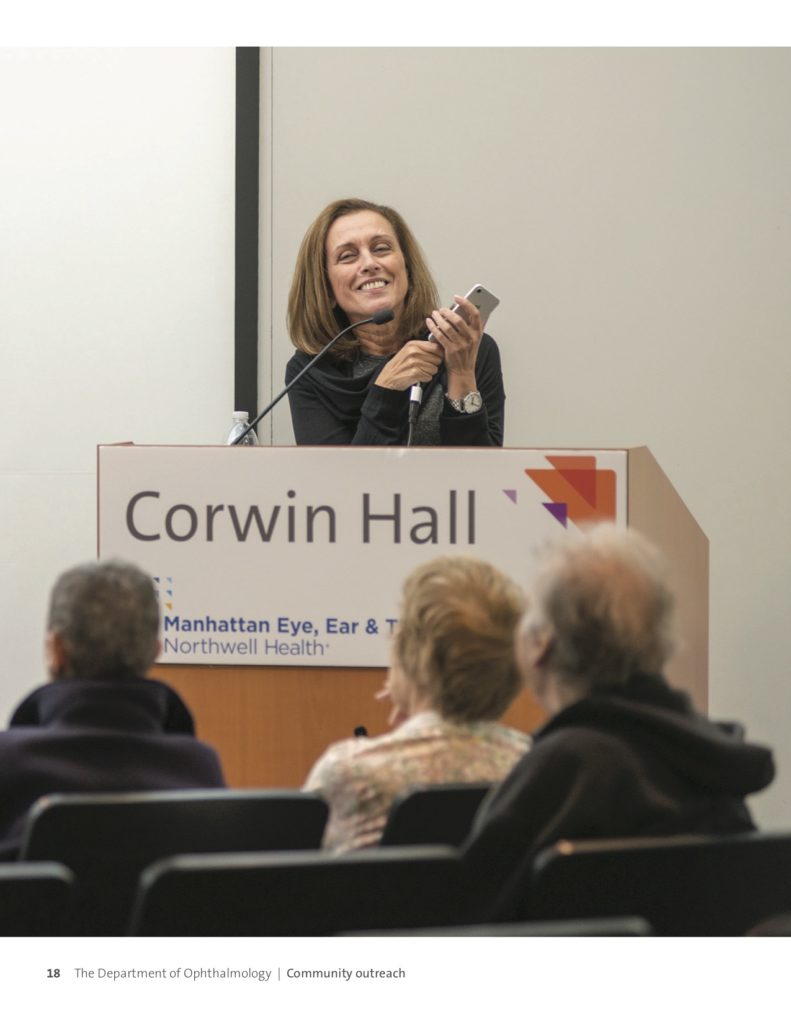
Image Credit: Manhattan Eye, Ear & Throat Hospital | Northwell Health
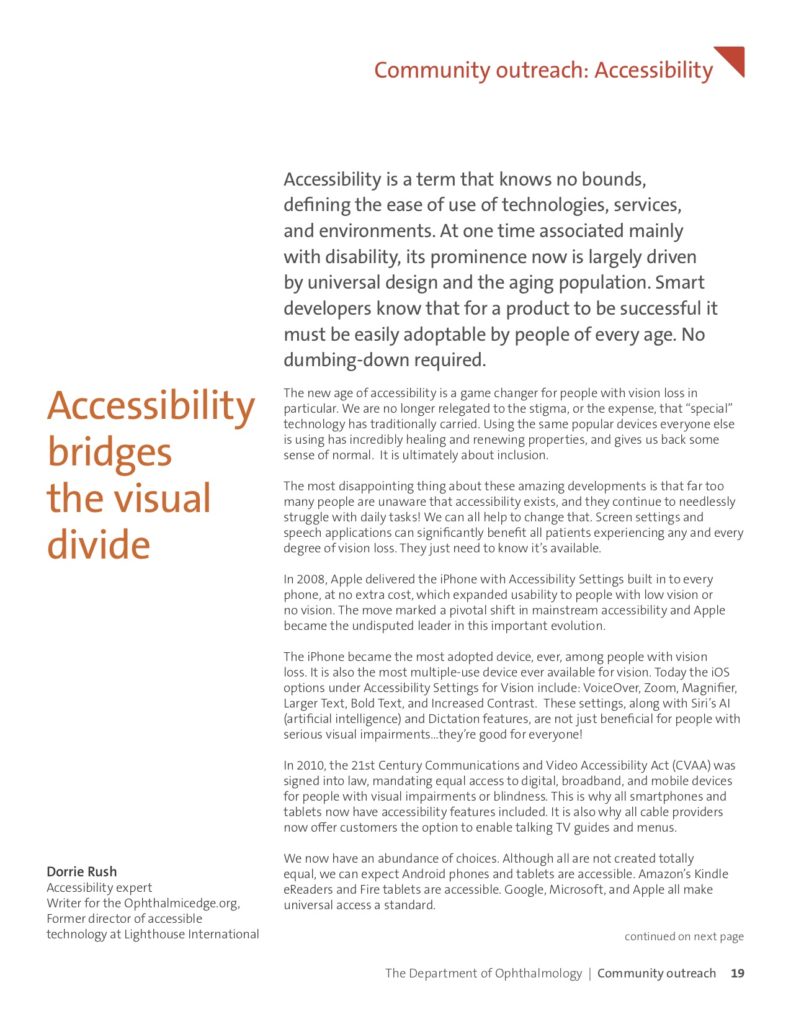
Image Credit: Manhattan Eye, Ear & Throat Hospital | Northwell Health
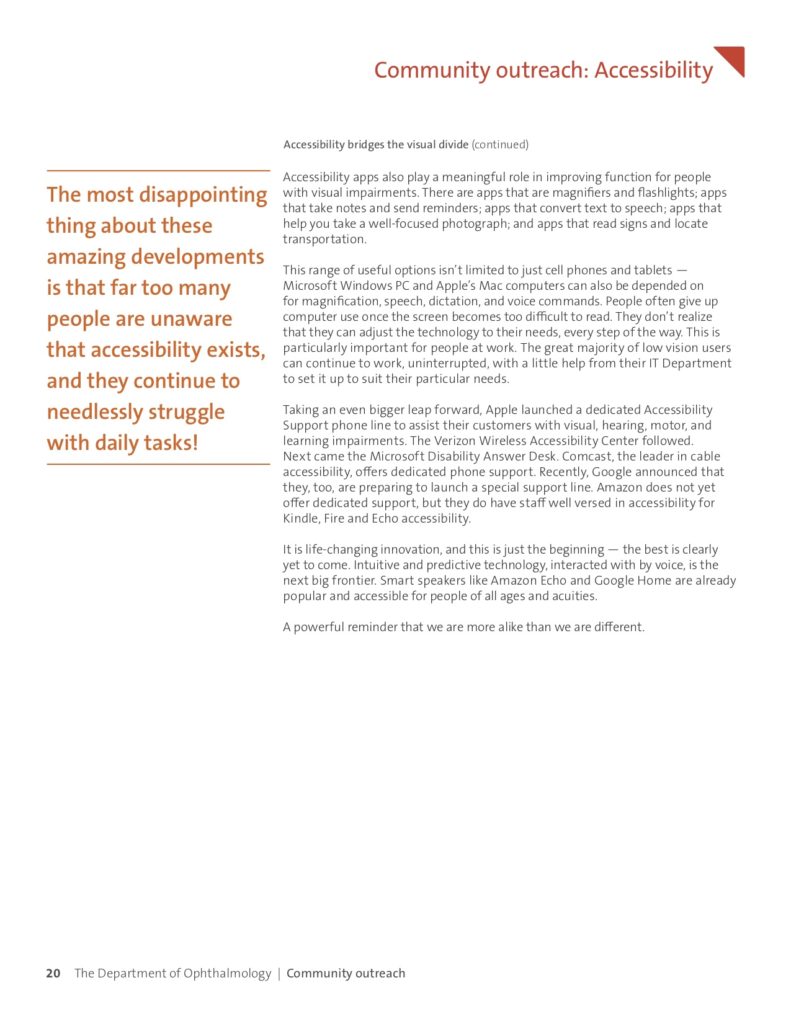
Image Credit: Manhattan Eye, Ear & Throat Hospital | Northwell Health
To read the PDF version of this article click here
Article first published in Manhattan Eye, Ear, & Throat Hospital | Northwell Health, Winter 2017 Newsletter




